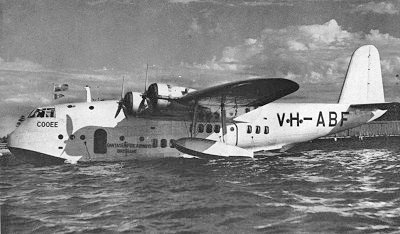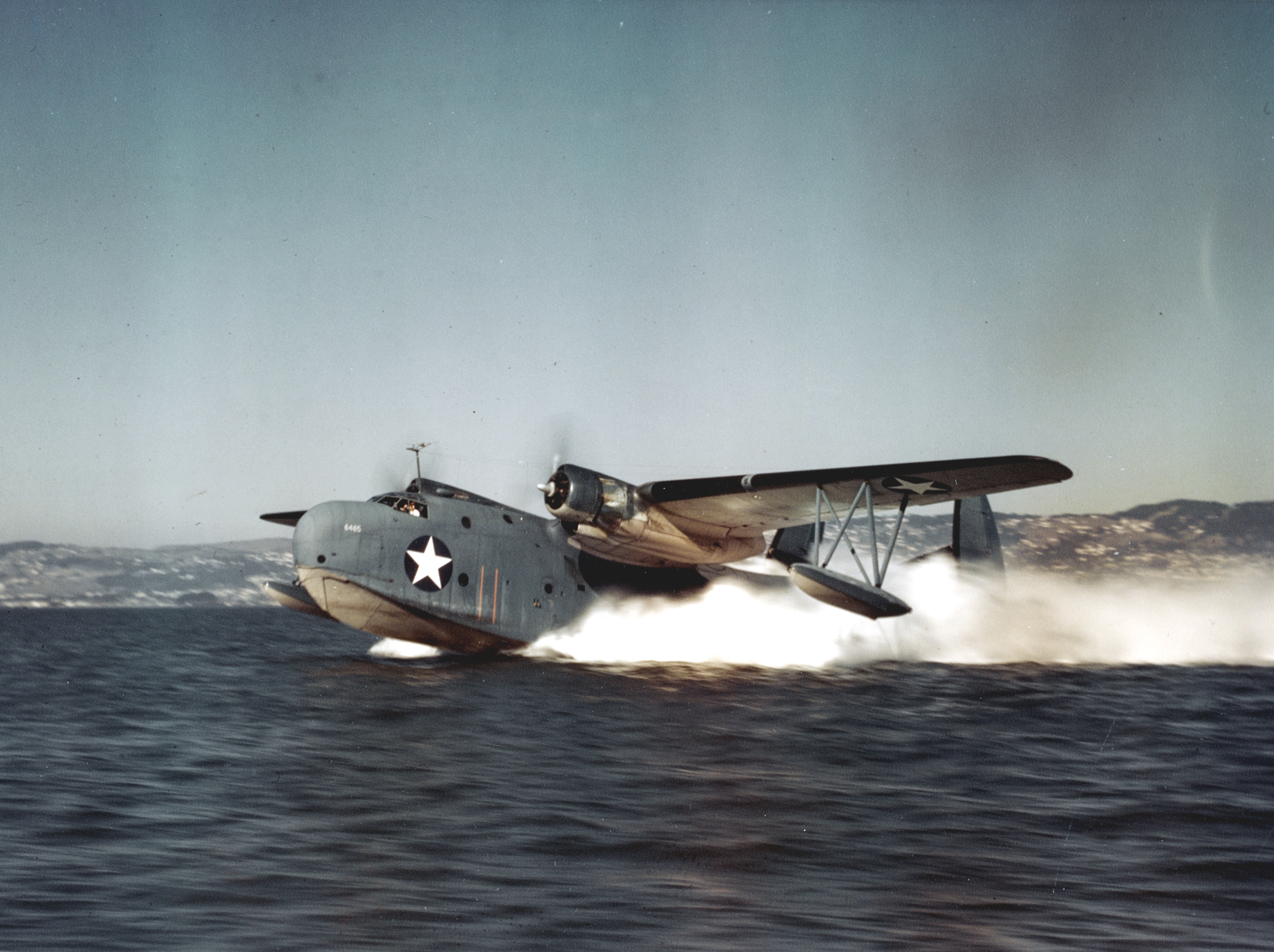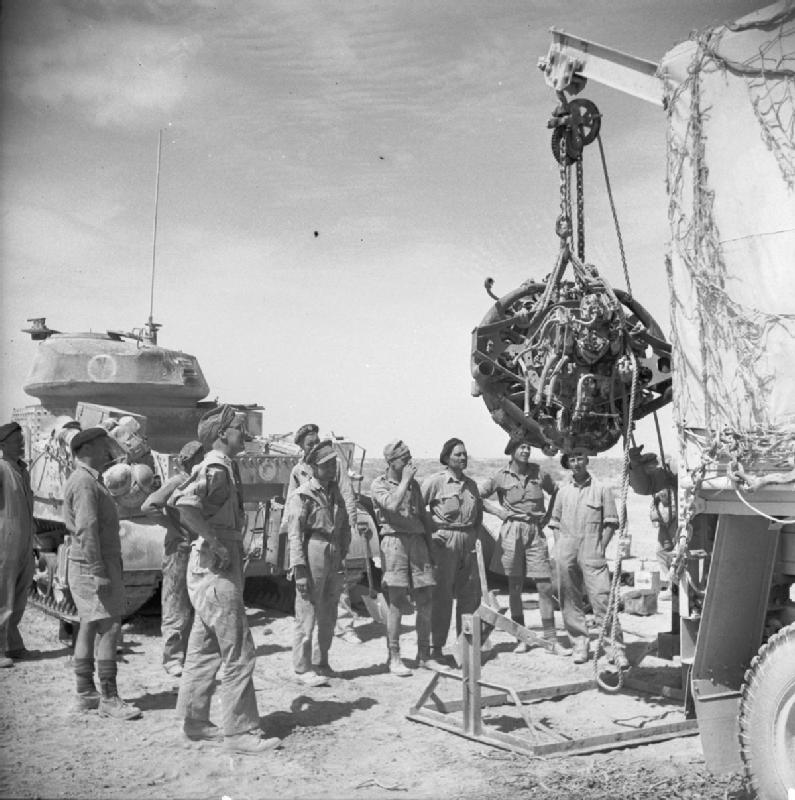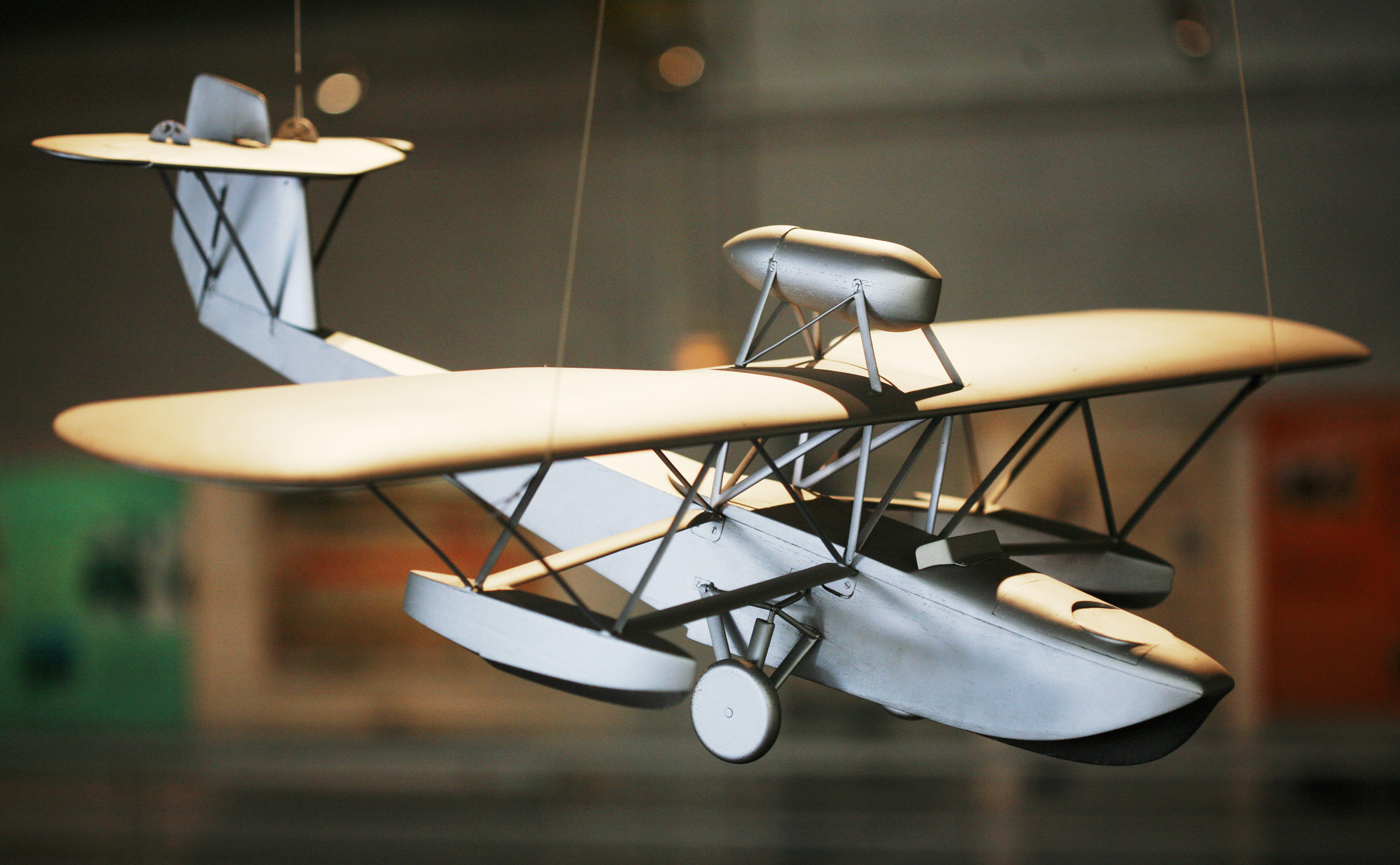|
Loire 501
The Loire 501 was a single-engined French liaison and training flying boat of the 1930s produced by Loire Aviation. It was operated by the French Navy, remaining in service until 1940. Design and development In 1930, Loire Aviation, a subsidiary of the French shipyard Ateliers et Chantiers de la Loire of Saint-Nazaire, started design of a single-engined flying boat for use as a trainer and a transport in France's overseas possessions. The resultant aircraft, the Loire 50, was an amphibian high-winged monoplane, with a pusher Salmson 9AB radial engine mounted above the wing. Construction was all-metal, with fabric-covered wings.Green 1968, p.30. The French government ordered construction of a prototype Loire 50 (together with a prototype of the three-engined Loire 60 flying boat) on 31 March 1931.Leyvastre 1970, p. 7 The Loire 50 first flew on 7 September 1931. Although it was damaged in an accident in October, it was repaired and entered service in 1932 as a trainer. It was ... [...More Info...] [...Related Items...] OR: [Wikipedia] [Google] [Baidu] |
Flying Boat
A flying boat is a type of seaplane with a hull, allowing it to land on water. It differs from a floatplane in having a fuselage that is purpose-designed for flotation, while floatplanes rely on fuselage-mounted floats for buoyancy. Though a flying boat’s fuselage provides buoyancy, it may also utilize under-wing floats or wing-like hull projections (called sponsons) for additional stability. Ascending into common use during the First World War, flying boats rapidly grew in both scale and capability during the interwar period, during which time numerous operators found commercial success with the type. Flying boats were some of the largest aircraft of the first half of the 20th century, exceeded in size only by bombers developed during the Second World War. Their advantage lay in using water instead of expensive land-based runways, making them the basis for international airlines in the interwar period. They were also commonly used as maritime patrol aircraft and air-s ... [...More Info...] [...Related Items...] OR: [Wikipedia] [Google] [Baidu] |
Loire 60
The Loire 60 was a 1930s French prototype for a long-range maritime reconnaissance flying boat produced by Loire Aviation. It was a trimotor training seaplane for reconnaissance, derived from the Loire 50. A single prototype was built and tested, but it never entered production. Specifications References External links 060 060 may refer to: * Motorola 68060 microprocessor * 0-6-0, wheel arrangement for railway locomotives * emergency telephone number in Mexico, "060" * Bermuda, country code "060" (ISO 3166-1 numeric) * 060, the area code for Chimay in the Belgian tele ... Loire 060 Flying boats Three-engined pusher aircraft Parasol-wing aircraft Aircraft first flown in 1932 {{aero-1930s-stub ... [...More Info...] [...Related Items...] OR: [Wikipedia] [Google] [Baidu] |
Flying Boats
A flying boat is a type of seaplane with a hull (watercraft), hull, allowing it to land on water. It differs from a floatplane in having a fuselage that is purpose-designed for flotation, while floatplanes rely on fuselage-mounted floats for buoyancy. Though a flying boat’s fuselage provides buoyancy, it may also utilize under-wing Float (nautical), floats or wing-like hull projections (called sponsons) for additional stability. Ascending into common use during the First World War, flying boats rapidly grew in both scale and capability during the interwar period, during which time numerous operators found commercial success with the type. Flying boats were some of the largest aircraft of the first half of the 20th century, exceeded in size only by bombers developed during the Second World War. Their advantage lay in using water instead of expensive land-based runways, making them the basis for international airlines in the interwar period. They were also commonly used as mar ... [...More Info...] [...Related Items...] OR: [Wikipedia] [Google] [Baidu] |
1930s French Military Reconnaissance Aircraft
Year 193 ( CXCIII) was a common year starting on Monday of the Julian calendar. At the time, it was known as the Year of the Consulship of Sosius and Ericius (or, less frequently, year 946 ''Ab urbe condita''). The denomination 193 for this year has been used since the early medieval period, when the Anno Domini calendar era became the prevalent method in Europe for naming years. Events By place Roman Empire * January 1 – Year of the Five Emperors: The Roman Senate chooses Publius Helvius Pertinax, against his will, to succeed the late Commodus as Emperor. Pertinax is forced to reorganize the handling of finances, which were wrecked under Commodus, to reestablish discipline in the Roman army, and to suspend the food programs established by Trajan, provoking the ire of the Praetorian Guard. * March 28 – Pertinax is assassinated by members of the Praetorian Guard, who storm the imperial palace. The Empire is auctioned off; Marcus Didius Julianus the highest ... [...More Info...] [...Related Items...] OR: [Wikipedia] [Google] [Baidu] |
Loire Aircraft
The Loire ( , , ; ; ; ; ) is the longest river in France and the 171st longest in the world. With a length of , it drains , more than a fifth of France's land, while its average discharge is only half that of the Rhône. It rises in the southeastern quarter of the French Massif Central in the Cévennes range (in the department of Ardèche) at near Mont Gerbier de Jonc; it flows north through Nevers to Orléans, then west through Tours and Nantes until it reaches the Bay of Biscay (Atlantic Ocean) at Saint-Nazaire. Its main tributaries include the rivers Nièvre, Maine and the Erdre on its right bank, and the rivers Allier, Cher, Indre, Vienne, and the Sèvre Nantaise on the left bank. The Loire gives its name to six departments: Loire, Haute-Loire, Loire-Atlantique, Indre-et-Loire, Maine-et-Loire, and Saône-et-Loire. The lower-central swathe of its valley straddling the Pays de la Loire and Centre-Val de Loire regions was added to the World Heritage Sites list of UNE ... [...More Info...] [...Related Items...] OR: [Wikipedia] [Google] [Baidu] |
List Of Aircraft Of World War II
The list of aircraft of World War II includes all of the aircraft used by countries which were at war during World War II from the period between when the country joined the war and the time the country withdrew from it, or when the war ended. Aircraft developed but not used operationally in the war are in the prototypes section at the bottom of the page. Prototypes for aircraft that entered service under a different design number are ignored in favor of the version that entered service. If the date of an aircraft's entry into service or first flight is not known, the aircraft will be listed by its name, the country of origin or major wartime users. Aircraft used for multiple roles are generally only listed under their primary role unless specialized versions were built for other roles in significant numbers. Aircraft used by neutral countries such as Spain, Switzerland and Sweden (or countries which did no significant fighting such as most of those in South America) are not include ... [...More Info...] [...Related Items...] OR: [Wikipedia] [Google] [Baidu] |
Hispano-Suiza 9Qd
The Wright R-975 Whirlwind was a series of nine-cylinder air-cooled radial aircraft engines built by the Wright Aeronautical division of Curtiss-Wright. These engines had a displacement of about and power ratings of . They were the largest members of the Wright Whirlwind engine family to be produced commercially, and they were also the most numerous. During World War II, Continental Motors built the R-975 under license as a powerplant for Allied tanks and other armored vehicles. Tens of thousands of engines were built for this purpose, dwarfing the R-975's usage in aircraft, where it was overshadowed by the similar Pratt & Whitney R-985. After the war, Continental continued to produce its own versions of the R-975 into the 1950s. Some of these produced as much as . The R-975 powered the American World War II M18 Hellcat tank destroyer which was claimed to have been the fastest tracked armored vehicle until the introduction of the turbine powered M1 Abrams in the 1980s. Design ... [...More Info...] [...Related Items...] OR: [Wikipedia] [Google] [Baidu] |
Second World War
World War II or the Second World War (1 September 1939 – 2 September 1945) was a World war, global conflict between two coalitions: the Allies of World War II, Allies and the Axis powers. World War II by country, Nearly all of the world's countries participated, with many nations mobilising all resources in pursuit of total war. Tanks in World War II, Tanks and Air warfare of World War II, aircraft played major roles, enabling the strategic bombing of cities and delivery of the Atomic bombings of Hiroshima and Nagasaki, first and only nuclear weapons ever used in war. World War II is the List of wars by death toll, deadliest conflict in history, causing World War II casualties, the death of 70 to 85 million people, more than half of whom were civilians. Millions died in genocides, including the Holocaust, and by massacres, starvation, and disease. After the Allied victory, Allied-occupied Germany, Germany, Allied-occupied Austria, Austria, Occupation of Japan, Japan, a ... [...More Info...] [...Related Items...] OR: [Wikipedia] [Google] [Baidu] |
Hispano-Suiza 9Q
The Wright R-975 Whirlwind was a series of nine-cylinder air-cooled radial aircraft engines built by the Wright Aeronautical division of Curtiss-Wright. These engines had a displacement of about and power ratings of . They were the largest members of the Wright Whirlwind engine family to be produced commercially, and they were also the most numerous. During World War II, Continental Motors built the R-975 under license as a powerplant for Allied tanks and other armored vehicles. Tens of thousands of engines were built for this purpose, dwarfing the R-975's usage in aircraft, where it was overshadowed by the similar Pratt & Whitney R-985. After the war, Continental continued to produce its own versions of the R-975 into the 1950s. Some of these produced as much as . The R-975 powered the American World War II M18 Hellcat tank destroyer which was claimed to have been the fastest tracked armored vehicle until the introduction of the turbine powered M1 Abrams in the 1980s. Design ... [...More Info...] [...Related Items...] OR: [Wikipedia] [Google] [Baidu] |
Radial Engine
The radial engine is a reciprocating engine, reciprocating type internal combustion engine, internal combustion engine configuration in which the cylinder (engine), cylinders "radiate" outward from a central crankcase like the spokes of a wheel. It resembles a stylized Star polygon, star when viewed from the front, and is called a "star engine" in some other languages. The radial configuration was commonly used for aircraft engines before gas turbine engines became predominant. Engine operation Since the axes of the cylinders are coplanar, the connecting rods cannot all be directly attached to the crankshaft unless mechanically complex forked connecting rods are used, none of which have been successful. Instead, the pistons are connected to the crankshaft with a master-and-articulating-rod assembly. One piston, the uppermost one in the animation, has a master rod with a direct attachment to the crankshaft. The remaining pistons pin their connecting rods' attachments to rings ar ... [...More Info...] [...Related Items...] OR: [Wikipedia] [Google] [Baidu] |
Loire Aviation
Loire Aviation was a French aircraft manufacturer in the inter-war period, specializing in seaplanes, and based in Saint-Nazaire, France. History Loire was founded in 1925 as a division of Ateliers et Chantiers de la Loire, a shipbuilding company based at St Nazaire. ACL were interested in diversifying into the new area of naval aviation, combining its knowledge of metal work and naval construction to produce seaplanes for the French mail service. The company started as a joint venture between ACL and Gourdou-Leseurre, contracting to build 257 GL 32’s under licence at a new factory at St Nazaire. In 1928 they disassociated and in 1930 the company became Loire Aviation, working on own designs by designers Asselot, Jarrion, and Guegand Kerguistel. During this period Loire built some 232 units of the Loire 11 seaplane and aircraft for other companies, as well as a range of other aircraft under the Loire marque. In 1933 the company united with Nieuport (by then known as Nieupo ... [...More Info...] [...Related Items...] OR: [Wikipedia] [Google] [Baidu] |








